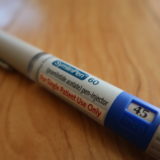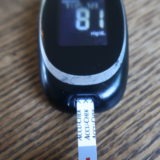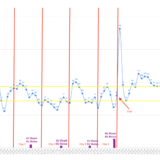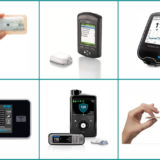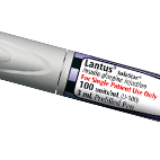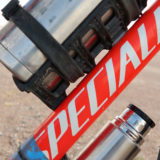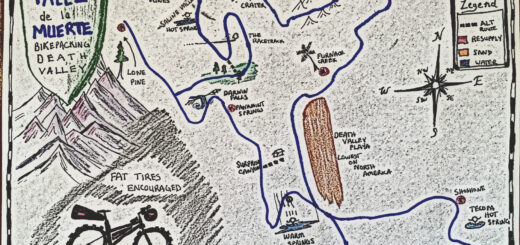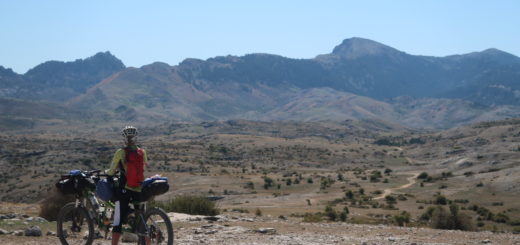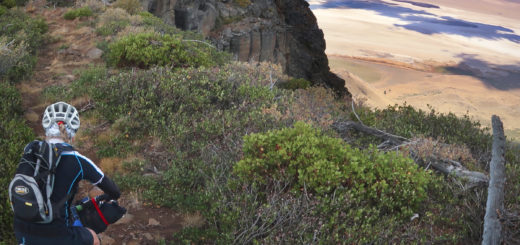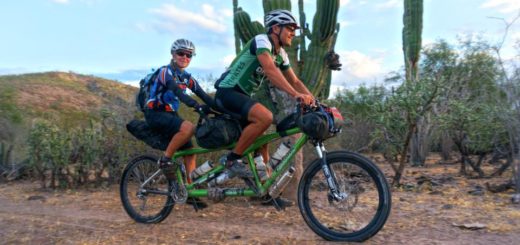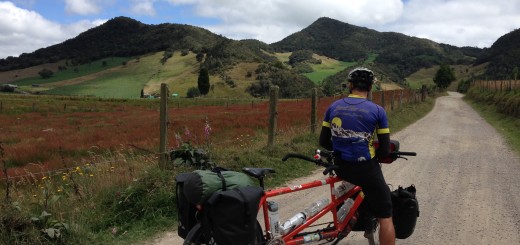Type 1 Diabetes and Ultra Endurance Sport – Keeping your insulin cool (and from freezing)
All material on this website is provided for your information only and may not be construed as medical advice or instruction. No action or inaction should be taken based solely on the contents of this information; instead, readers should consult appropriate health professionals on any matter relating to their health and well-being.
When summer comes along, the topic of keeping insulin cool becomes a hot topic. In the forums, many people suggest elaborate solutions such as using coolers that you plug into your car’s cigarette lighters, the Frio, and various forms of ice packs. These are all great products, I’m sure – but for multi-day adventures in the wilderness, we need something that is simple with no moving parts or need for batteries. Also, because insulin needs to be protected from both freezing AND going over 80°F (26°C)1, our solution needs to be able to reliably protect from both of these conditions.
In my preparations for the Great Divide Mountain Bike Race, I was most attracted to the simplicity of the Frio and decided to do some testing to see if it would work for me.
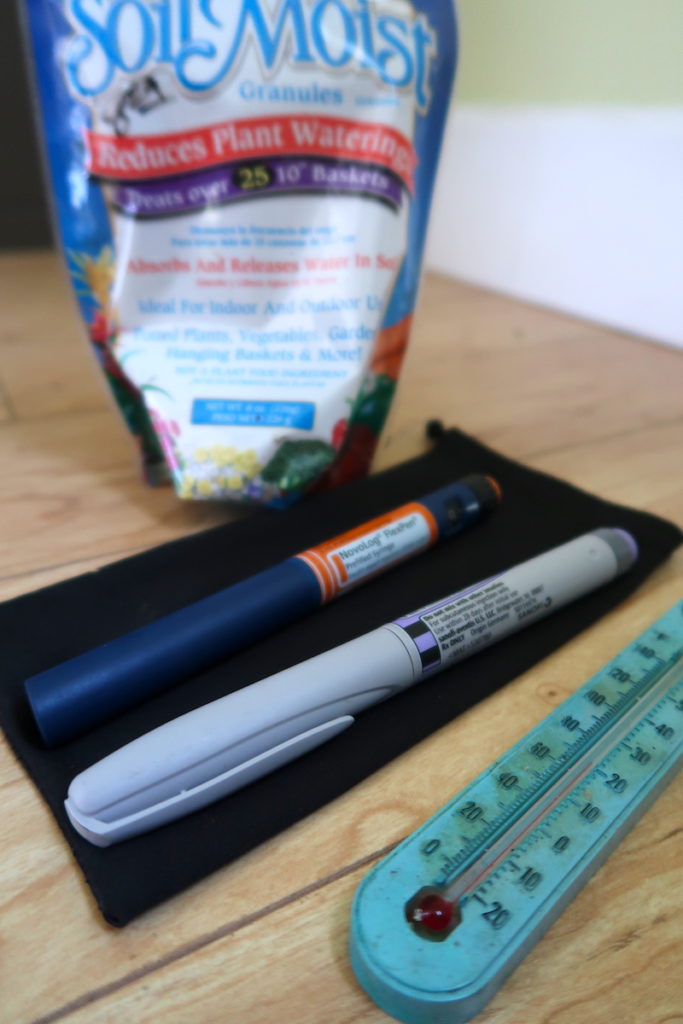
My first experiment in keeping my insulin cool – A thermometer, sunglass bag, some garden soil moisture pellets, and a 105F Day.
Rather than just buy a Frio, I decided to see if I could mock one up for testing purposes. I got an old sunglass bag (I chose this because the fabric was permeable to air/water), some Soil Moist granules (which I already had in the garden shed), and a thermometer. I put about 2Tbs of granules into the sunglass bag, got it wet, and inserted the thermometer. I was surprised by how much the granules expanded. I hung this moist bag in the sun all day. We get a lot of days here over 100°F, and I checked periodically throughout the day – including when the outside temperature peaked at 105°F. The highest reading on the internal thermometer was 81°F – not bad! I figured that this could work for bike packing. It did have the minor inconvenience of the fact that I would have to figure out an external location for the sunglass case on my bike (this product works based on evaporative cooling, so it has to be exposed to fresh air). Then I realized: I’m going to have several freezing nights as well.
Of course, my next experiment was to take the thermometer inside the sleeping bag with me. I figured that I could bring the insulin into my sleeping bag to keep it from freezing. That would work, but the thermometer easily indicated that the temperature inside the sleeping bag exceeded the necessary 80F.
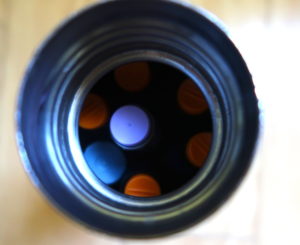
My vacuum bottle with SEVEN insulin pens inside – and there is room for more! My vacuum bottle measures 9.5″ (240mm) tall, and the base diameter is 2.75″ (67mm)
I needed another solution to protect from freezing too – and the Frio wasn’t going to help there. I decided to experiment with a vacuum bottle. With no additional components, and just a little planning, this simple tool can thermally buffer both hot days and icy nights.
In some weather (for example days of 100°F/nights of 55°F), you can just open your bottle at night, and keep it closed during the day. With enough insulin pens inside, the temperature shouldn’t exceed 80°F inside. One challenge with this strategy is continuous hot weather (i.e. when nights don’t go below 80°F (26°C)). For that, you’ll need to find some ice – in these situations if in a first-world country, I visit a fast food restaurant and grab a small piece of ice (or two) from one of the soda refill machines. You don’t need much to maintain the temperature for 24 hours. For longer durations in remote locations, you may need more ice. In a pinch, you can usually find refrigerated water in 3rd world countries. The pens are obviously sealed, but I try to avoid using much water (or ice that will eventually turn to water) when possible because I worry that it will damage the dispensing mechanism.
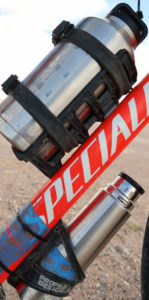
My final solution to the insulin storage problem: A small vacuum bottle. The upper bottle holds ice, and the lower vacuum bottle holds my insulin pens.
My original vacuum bottle weighed 18oz (510g). This was a pretty hefty addition to my bike where I had paid hundreds of dollars per ounce of weight savings! Luckily, one day, my friend took me to a thrift store and I found the perfectly sized (9.5″ (240mm) tall, and the base diameter is 2.75″ (67mm)) vacuum bottle for my insulin pens. The new pictured vacuum bottle weighs 9.5 ounces (269g) – a huge weight savings!
I have already used this strategy for many bike tours. Most notably, I found that this worked for a trip lasting 2 months in the desert of Baja! Another concern I had with bike packing with insulin for 2 months was the vibration from mountain biking. Insulin is a protein, and proteins can be denatured (think “broken apart”) when agitated roughly. I was pleased to find that my insulin did work for the 2 months – so agitation is not as big a factor as I had feared.
For bikepacking / backpacking trips longer than 2 months, however, I suspect that one may need to come up with an insulin resupply strategy. Unopened insulin pens do need to be refrigerated for long term storage – so beyond 2 months, it may be pushing the limits. I had some extra pens when I got home (spares – always pack more than you need!)… and I had the feeling they were less potent. The truth is, because insulin is so variable on its own, I have no quantifiable way of determining how much potency they had lost. I decided to play it safe and throw away the spare insulin pens that I had carried through the desert for 2 months.
References & Footnotes
- Effect of temperature on the potency & pharmacological action of insulin, Vimalavathini R1, Gitanjali B., 2009, https://www.ncbi.nlm.nih.gov/pubmed/19797814









